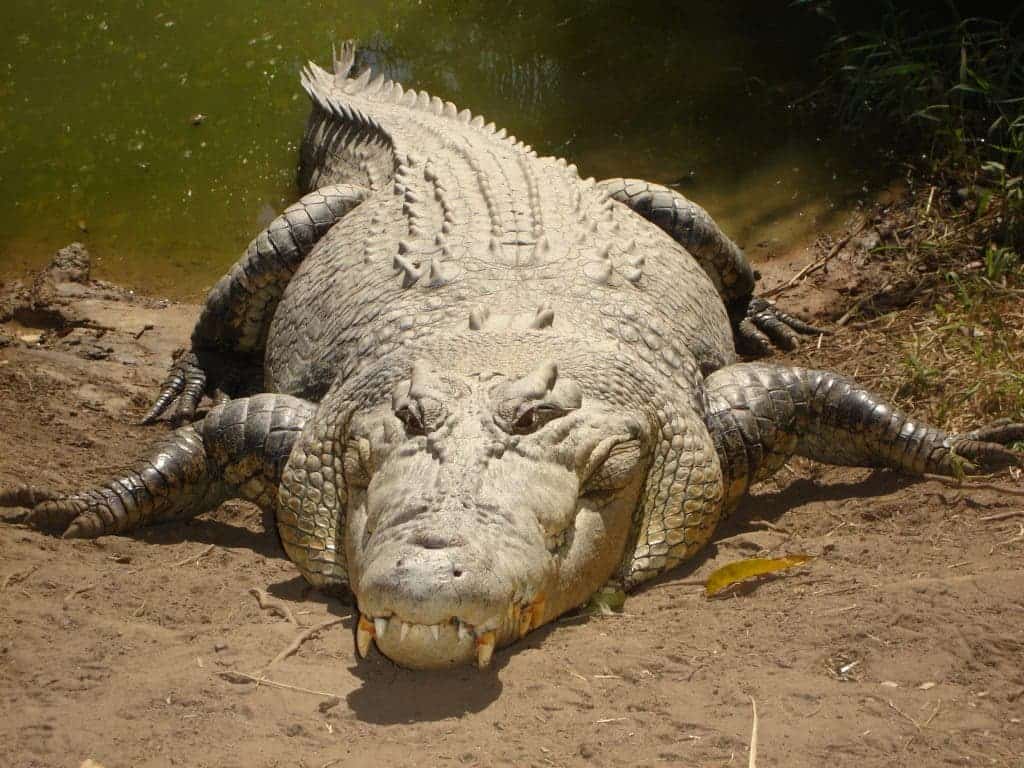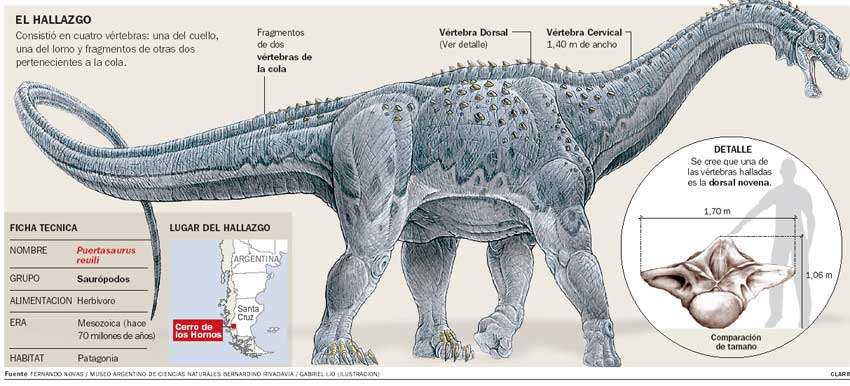If you’re asking yourself what the world’s biggest reptile is, then the answer is a bit complicated because we have to make a significant distinction – do you want to know the largest living reptile or the largest reptile ever? For the former, the answer is pretty straightforward: the saltwater crocodile takes the crown, with a maximum documented weight of 2 tons. As for the latter, it’s probably (though we don’t know for sure) a dinosaur called Amphicoelias fragilimus — measuring 58 meters (190 ft) in length and weighing a whopping 122 tons.
The largest living reptile

Reptiles have been around for a long time. As a group, they evolved some 320 million years ago during a period called the Carboniferous. Some reptiles, like the dinosaurs, have come and gone in geologic time, but others (like some crocodiles), have changed remarkably little over the past 300 million years.
Not all reptiles are large. Some reptiles, like the leaf chameleons, which are found in Madagascar, measure lless than 3 cm (1 inch) long when fully grown. Another type of ‘nano chameleon’ is even smaller. But other reptiles really do grow to impressive sizes.
Out of the 10 largest and heaviest reptiles, all except one are crocodiles or related to crocodiles (alligators, caimans, or gharials). The odd one out is the leatherback sea turtle, which can weigh almost 1 ton and measures approximately 2 meters in length (6.6 feet).
Before we dive into the world of big crocs, let’s take a moment to also talk snakes.
Snakes are almost one-dimensional — they’re long. If you’re judging “the biggest” by length alone, then snakes also deserve to be high up on the list. After all, the green anaconda can grow up to almost 8.8 meters, and according to unverified reports, even beyond that. Reticulated pythons also grow up to almost 8 meters, and even the venomous king cobra can reach up to 5.7 m (19 ft).
However, snakes are not nearly as massive as crocodiles, which is why, in this type of contest, crocodiles still come up on top.
Big crocodile
The average saltwater crocodile usually measures between 4.3 and 5.2 m (14 and 17 ft) in length and weighs 400–1,000 kg (880–2,200 lb). It can grow more, but that rarely happens. Even so, there have been reports of a crocodile weighing twice as much as that, making it not only the largest reptile but also one of the largest predators in the world.
The saltwater crocodile, Crocodylus porosus is believed to have a direct link to similar crocodilians that inhabited the shorelines of the supercontinent Gondwana 98 million years ago. Indeed, there are many striking similarities between today’s crocodiles and the ones back then, which makes many paleontologists consider crocs a living fossils. C. porosus itself is an ancient species, diverging from its relatives from 12 to 6 million years ago.
The primary behavior to distinguish the saltwater crocodile from other crocodiles is its tendency to occupy salt water. Even though other crocodiles have salt glands that would enable them to live in salty water (something which alligators don’t have) most other species do not venture out to sea except during extreme conditions. The saltwater crocodile can travel between areas separated by sea, relying on the relative ease of traveling through water in order to circumvent long distances on the same land mass, such as in Australia. They can travel extremely long distances using water currents.

A study that tracked the movements of crocodiles via satellite found that one of them traveled 411 km (255 mi) in 20 days. Without having to move around much, sometimes simply by floating, the current-riding behavior allows for the conservation of energy. They are even known to pause their travels for a few days if the current doesn’t have the desired direction; the crocs simply wait for the current to change direction again and up they go.
The size difference between the saltwater crocodile and other crocodiles and reptiles is striking. Here’s a comparison with other relatively large reptiles:
| Reptile | Maximum Length | Maximum Weight | Habitat |
|---|---|---|---|
| Saltwater crocodile | Up to 7 meters (23 feet) | Up to 1,000 kg (2,200 lbs) | Coastal areas in the tropics |
| American alligator | Up to 4.5 meters (15 feet) | Up to 450 kg (990 lbs) | Swamps, marshes, and wetlands in the southeastern United States |
| Green anaconda | Up to 8.8 meters (28 feet) | Up to 227 kg (500 lbs) | Wetlands and swamps in South America |
| Komodo dragon | Up to 3 meters (10 feet) | Up to 90 kg (200 lbs) | Small islands in Indonesia |
| African spurred tortoise | Up to 1.3 meters (4.3 feet) | Up to 125 kg (275 lbs) | Dry savannas in West Africa |
The largest reptile ever – a dinosaur
Of course, this is the largest living reptile. Other crocodilians in our planet’s history were even larger than that. For instance, Sarcosuchus Imperator, a species of crocodile that lived around 110 million years ago measured, on average, 9 meters long (30 feet). Its largest individuals were even bigger than that. For instance, one fossil find revealed that in some individuals, the skull of S. imperator alone was is 1.6 m (5.25 ft) long, and the crocodile had a total body length of 11.65 m (38.2 ft).
But even the largest crocodile ever is not even close to the largest reptile ever.
We know almost for sure that the largest reptile ever was a dinosaur... but that’s where the certainty ends. The problem is that dinosaurs went extinct 65 million years ago (except birds, which are dinosaurs), so it’s very hard to know for sure how big and heavy the biggest dinosaurs were. However, with paleontological findings and biological modeling, we can get get a fairly good idea.

The largest dinosaurs, and the largest animals to ever live on land, were the Sauropods. Sauropods were herbivores, and could grow up to immense sizes; they were so big, that we don’t even know for sure how it was possible for them to live in the first place. The tallest and heaviest dinosaur we know from a complete skeleton is a specimen of an immature Giraffatitan discovered in Tanzania between 1907 and 1912. It is 12 m (40 ft) tall and weighed 23–37 tonnes. However, there are much bigger dinosaurs – it’s just that we haven’t discovered their complete skeleton.
Here are the five largest known dinosaurs, based on published results:
- Amphicoelias fragillimus: 58 m (190 ft)
- Argentinosaurus huinculensis: 30–39.7 m (98–130 ft)
- Turiasaurus riodevensis: 36–39 m (118–128 ft)
- Turiasaurus riodevensis: 36–39 m (118–128 ft)
- Futalognkosaurus dukei: 32–34 m (105–112 ft)
Again, those lengths are estimated based on some bones paleontologists have found. Weight estimates are a bit more difficult, but here are the estimated heaviest dinosaurs:
- Amphicoelias fragillimus: 122.4 t (134.9 short tons)
- Argentinosaurus huinculensis: 73–90 t (80–99 short tons)
- “Antarctosaurus” giganteus: 69 t (76 short tons)
- Dreadnoughtus schrani: 59.3 t (65.4 short tons)
- Paralititan stromeri: 59 t (65 short tons)

So, the heaviest reptile ever seems to be Amphicoelias fragillimus – but everything we know about this dinosaur was derived from a single, incomplete 1.5 m tall neural arch (the part of a vertebra with spines and processes), either last or second to last in the series of back vertebrae, measuring 2.7 m (8.8 ft). However, because the fossil was studied, published, and described in 1870, it got lost at some point in time and the only evidence remains in published notes – all further requests to locate it have failed. Should we trust evidence that doesn’t even exist anymore? Much of the paleontological community does.
Argentinosaurus huinculensis however is much more well-known. The sauropod lived in today’s Argentina around 96 million years ago. Among the things which made them so interesting is the fact that their hatchlings were actually fairly small – a study found that during their lifetime, they grow 25,000 times their original size before reaching adult size; the entire process lasted only 15 years.
So there you have it. Reptiles can be both big and small, and some can grow to be very big. The largest reptiles are no longer living today, but we know something about them from the fossil record (and from modeling studies). But perhaps there’s another, even greater species out there, just waiting to be discovered — or perhaps, yet another species will evolve at some point in the future.






